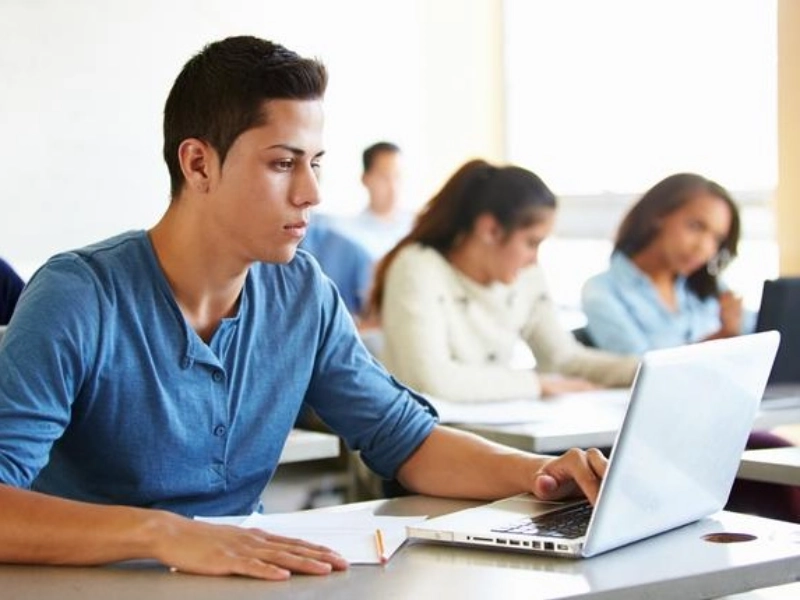The Future of Education - What Will It Look Like?
Education needs to rethink itself after a year marked by a worldwide epidemic, school closures, remote learning across the country, and demonstrations for racial justice. While maintaining high standards and taking steps to fortify schools is certainly important, it is no longer sufficient to turn schools into powerful engines of social mobility. With a range of technology instruments at their disposal, students' education in the future must be more project-based.

Customized Education
Students can customize their education to fit their unique needs, interests, and skill levels with the help of personalized learning. One-on-one tutoring, blended learning, and tailored learning pathways are some examples of this. There would be greater chances for practical work with peers and community-based projects. Outside of the classroom, students can acquire technical skills through mentoring underprivileged youngsters or interning at businesses. As it becomes more widely acknowledged that people have a shorter attention span than goldfish, we would see an increase in bite-sized learning. Podcasts, interactive films, and quick courses may fall under this category. Additionally, we would witness an increase in immersive learning that makes use of technologies like augmented and virtual reality. Teachers can utilize this to help their pupils understand topics like dinosaurs or volcanoes, as it was made popular by the Pokemon Go craze.
Blended Education
This learning approach blends online learning with conventional classroom education. As a result, the blend is student-centered and empowers students to take charge of their education. One way to accomplish this could be for a teacher to project the online curriculum into the classroom or just give students the freedom to stop, resume, and go back through the lessons at any time. Additionally, interactive resources like games and video engagement could be used. However, because blended learning might lead to increased fragmentation in the classroom, some educators are hesitant to use it. Additionally, it needs a certain level of computer and Internet access, which might be difficult in workplaces and rural locations. Furthermore, if pupils aren't taught how to utilize the tool correctly and identify sources, they can simply cheat. This might lead to plagiarism. Personal Learning Mechanisms Children can progress through their education at a speed that best fits their unique learning styles thanks to individual learning. They can study their resources and accomplish their objectives on their own by using this strategy. In order for this strategy to be effective, students must cultivate a willingness to study because it increases their motivation and efficiency. Additionally, students need to be able to monitor their progress toward a goal, which can be made easier with regular feedback from teachers to students. This should be a dialogue between the two of you, occurring when it is convenient for the student. Students who receive regular feedback like this are better able to recognize their talents and stay on course. It can assist them in determining which areas require more focus. Additionally, it might assist them in making changes to enhance their learning.
Study Aids That Adjust to Students' Capabilities
Students can work at their own pace thanks to digital tools. For instance, individuals can take digital notes that they can access at any time or view lectures on their mobile devices. Through online platforms, they can also take part in interactive debates and cooperative initiatives. They can converse with their teachers as well thanks to these resources. Rather than being alienated with too-easy content or struggling with classes that are too difficult, students will be challenged at a suitable level when using adaptive learning. Algorithms and machine learning are utilized to find and provide resources that are tailored to each student's individual needs. These developments will support students in acquiring skills that are critical to their success in the workplace. They will gain knowledge of problem-solving techniques, thinking frameworks, and procedures.
Fostering Positive
Innovative and adaptable learning environments are what the world needs. More than ever, educators need to design compelling curricula. Furthermore, there is a growing movement in education to teach pupils practical skills. This is a fantastic approach to help students be ready for the real world and increase their employability. Project-based learning is another development in education. With this more creative and participatory method of instruction, students take charge of their education. And last, augmented reality is a well-liked technology that has the potential to change education. Even if it seems like something out of a science fiction novel, you might be able to enroll in college classes in the future that deal with your field of vision. This will be especially helpful in underdeveloped nations where there is a lack of access to high-quality education.








